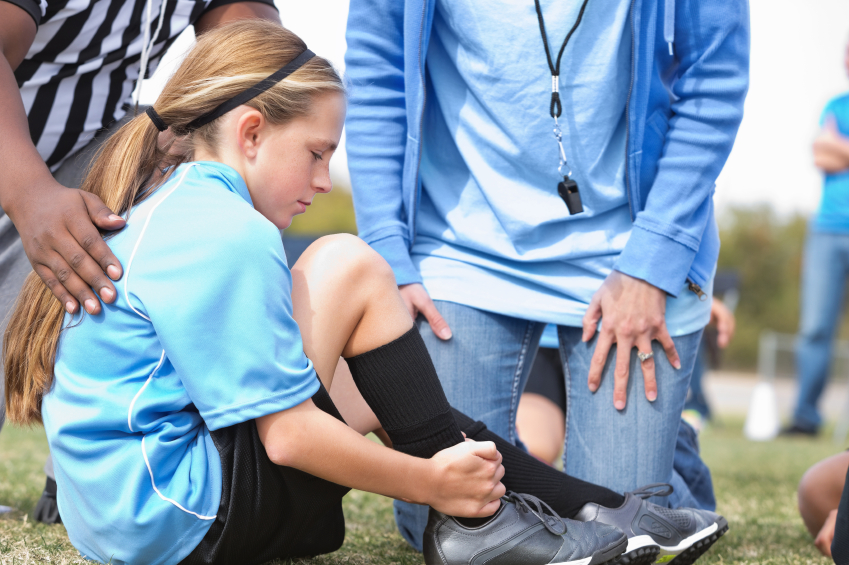Athletes of all ages have learned to fear these words: “You tore your ACL.” It’s news that I dread giving because of what it means for a kid’s future. The ACL (anterior cruciate ligament) is one of the major ligaments in the knee that helps keep it stable when you are running, pivoting and jumping. Tearing it leads to major consequences in an athlete’s life. It means the end of the season and likely no start to the next sport or season that they had planned. ACL injuries in young athletes most likely mean surgery, lots of physical therapy and lots of work to get back to participation in sports. In addition to the immediate hurdles, down the road athletes are at risk for re-tearing, tearing the other side and arthritis of the injured knee. This is a lot for a newly injured athlete and his or her family to deal with and to think about!
But this leads to the question, can ACL tears be prevented? And the answer is that in some cases, they can be! There is no way to prevent a football player that gets tackled at the knees from tearing his ACL, or the basketball player that gets her legs taken out during a lay-up from getting the same injury. These examples are, unfortunately, just bad luck. However, many athletes injure their knees and tear their ACLs without ever coming in contact with another player (called a “non-contact” ACL injury). They just take an awkward step or land funny, causing their injury.
Things Athletes Can Do to Help Prevent Injury:
- Consider doing an ACL prevention program—Lots of studies show that learning how to land and pivot can prevent ACL injuries. Sometimes, muscle imbalances can put you more at risk. Several programs have been developed that use simple exercises to improve strength and balance in the right muscles to avoid this devastating injury. Free programs are available online to print (such as 11+ Program).
- Ensure good footwear—Planting a foot in the ground with improper cleats can cause it to stick, which can sometimes twist the knee, leading to an ACL injury. Cleats should all be flat and the same size on the front of the shoe. You should only wear cleats on surfaces that need them.
- Monitor field conditions—Look for holes, divots and other hazards on fields. Stepping in a hole while running full speed on a soccer field is a good way to get injured!
- Get adequate rest and don’t play with an injury—Lack of rest or playing with a different injury may make an athlete sloppy and not pay attention to landing and pivoting techniques. This can be a set up for ACL injury.
Although following all of these tips above can’t prevent all ACL injuries, they are simple things that we as parents, athletes or coaches can do to help keep our athletes as safe as possible.
If your child is sidelined with an ACL injury, visit The Young Athlete Center’s website to learn more about what it means for your young athlete and how this difficult injury can be treated.






Comments